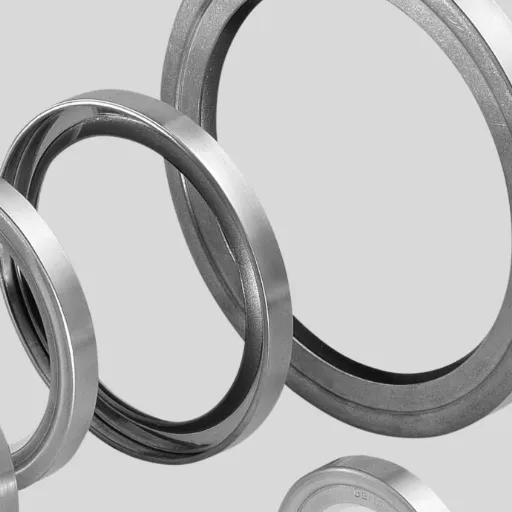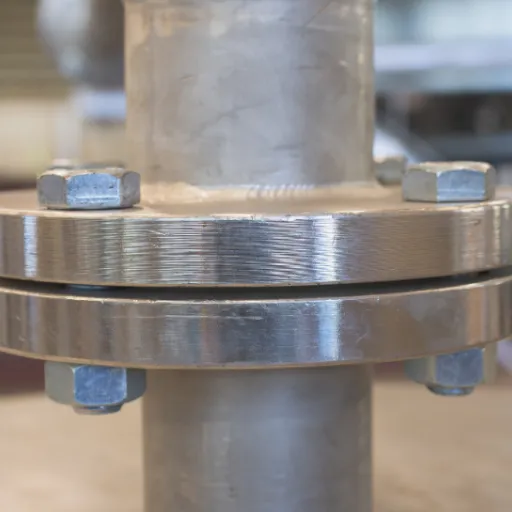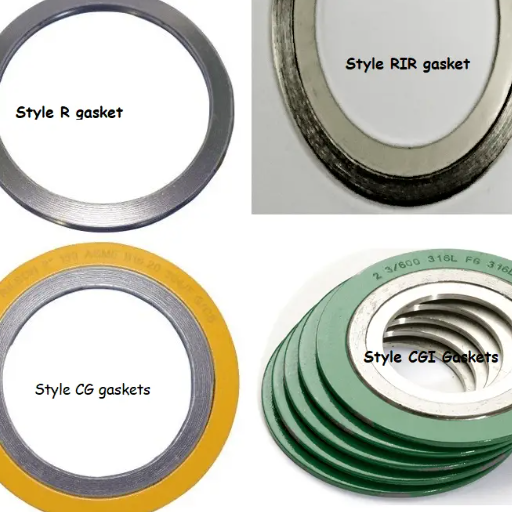Introduction: When it comes to bolting flanges in piping systems, bolt selection goes beyond just being technical—it is the foundation on which safety, efficiency, and long-term functioning is built. Whether you are an experienced engineer, a contractor, or a DIY enthusiast, knowing how to select the correct flange bolt size helps in saving costs from mistakes, system failures, and downtime.
Understanding Bolt Size and Length Fundamentals

Key Measurements for Bolt Sizing
Bolt size and length are determined by measuring key features:
- Diameter: Measure the width of the bolt shank (unthreaded portion)
- Length: Measure from the underside of the head to the tip of the bolt (excluding countersunk heads)
- Thread Type: Coarse or fine threads, depending on application requirements
- Material Thickness: Consider the grip length needed for proper engagement
Why Bolt Size Matters
Bolt size is crucial for serviceability, performance, and safety of any assembly. The consequences of incorrect sizing include:
- Undersized bolts: Subject to failure under stress, causing system breakdown or accidents
- Oversized bolts: Cannot engage firmly, jeopardizing assembly operation
- Correct sizing: Ensures proper force distribution, prevents vibration loosening, and increases reliability
Determining Proper Bolt Length
Thread Engagement Requirements
| Material Type | Minimum Thread Engagement | Recommended Length |
|---|---|---|
| Metals | 1.5 × bolt diameter | Standard engagement |
| Wood/Plastics | 2.0 × bolt diameter | Extended engagement |
| Composite Materials | 1.75 × bolt diameter | Modified engagement |
Bolt Chart Usage
Using a bolt chart provides several advantages:
- Quick determination of bolt size and thread engagement
- Matching required strength with material thickness
- Preventing over or under-engagement issues
- Avoiding component interference problems
- Ensuring assembly efficiency
Flange Specifications and Measurements

| Flange Type | Application | Key Features |
|---|---|---|
| Weld Neck | High pressure/temperature | Butt welded to pipe |
| Slip-On | Low pressure applications | Slides over pipe end |
| Blind | System closure | No center opening |
Measuring Flange Thickness
- Use calibrated measuring tools (vernier caliper or micrometer)
- Measure from center of flange face toward outer edge
- Account for raised faces or special features
- Compare measurements with ASME B16.5 or applicable standards
- Verify compliance with design requirements
Identifying Bolt Holes
Follow this systematic approach:
- Bolt Circle Diameter (BCD): Measure diameter of circle through bolt hole centers
- Hole Count: Count evenly spaced holes on the circle
- Hole Diameter: Measure each bolt hole for compatibility
- Spacing Verification: Ensure compliance with ASME B16.5 standards
Thread Specifications and Standards

Understanding Thread Pitch
Thread Pitch Definition: The distance between threads measured parallel to the bolt axis
- Imperial: Measured as threads per inch (TPI)
- Metric: Measured in millimeters between thread crests
Metric vs. Standard Threads Comparison
| Thread System | Designation Format | Example | Measurement Units |
|---|---|---|---|
| Metric | M[diameter]×[pitch] | M10×1.5 | Millimeters |
| Standard (Imperial) | [diameter]-[TPI] | 1/4-20 | Inches |
Thread Pitch Calculations
- Imperial Formula: Pitch = 1/TPI (e.g., 20 TPI = 1/20 = 0.05 inches)
- Metric Measurement: Direct measurement between thread crests in millimeters
- Compatibility Check: Ensure matching threads to prevent stripping or loosening
Torque and Load Considerations

Key Factors for Load Calculations
- Force Analysis: Identify direction and magnitude of applied forces
- Environmental Conditions: Consider temperature, humidity, and corrosive factors
- Material Properties: Account for component material characteristics
- Safety Factors: Apply appropriate safety margins
- Dynamic Loading: Consider vibration and cyclic loads
Torque Specification Factors
| Factor | Impact on Torque | Considerations |
|---|---|---|
| Material Grade | Higher grade = Higher torque | Consult manufacturer specifications |
| Lubrication | Reduces required torque | Account for friction reduction |
| Thread Type | Fine threads require different values | Reference thread standards |
| Temperature | Affects material properties | Consider thermal expansion |
Selection and Conversion Process

Step-by-Step Selection Process
- Material Identification: Determine component materials and grades
- Load Calculation: Calculate forces and apply safety factors
- Bolt Selection: Choose based on tensile strength, size, and grade
- Standard Compliance: Verify ASTM or ISO specification compliance
- Spacing Design: Optimize load distribution and prevent failure
- Verification: Use engineering software for calculation confirmation
Metric Conversion Guidelines
Essential Conversion Factors:
- 1 inch = 25.4 millimeters
- Metric pitch (mm) to TPI: Use conversion charts or formulas
- Cross-reference with technical standards
- Verify using engineering calculators
Best Practices for Fastener Selection
Material Compatibility Guidelines
| Environment | Recommended Material | Key Benefits |
|---|---|---|
| Corrosive | Stainless Steel | Corrosion resistance |
| High Load | High-Strength Alloys | Superior load bearing |
| Standard Applications | Carbon Steel | Cost-effective solution |
References
- Flange Bolt Chart With Wrench Size
View Source
This document provides insights into flange bolts, their types, materials, and proper wrench selection. - Calculation of Bolted Flange Connections
View Source
Discusses prestress values, stress analysis, and tightness analysis for bolted flange connections. - Flange Bolting Torque Chart
View Source
A critical tool providing recommended torque values for specific bolt sizes and materials under various conditions. - Top Flange Bolt Suppliers in China
Frequently Asked Questions (FAQ)
What factors should I consider when selecting the right bolt size?
When selecting the right bolt size, you should consider factors such as the load the bolt will need to support, the thickness of the materials being fastened, and the dimensions of the bolt holes. It’s essential to reference a flange bolt chart to determine the appropriate size of bolts for your specific application. Additionally, consider the nominal size and thread pitch, as these will affect the engagement and strength of the connection. Always look at the torque values recommended for the bolt grade you choose, as this will ensure proper tightening without risking failure.
How does the length of a bolt affect its performance?
The length of a bolt is crucial for ensuring sufficient engagement with the nut or threaded hole. If the bolt is too short, it may not provide enough holding power, while a bolt that is too long can interfere with other components or lead to improper torque application. The flange size and the thickness of the materials being joined will determine the ideal bolt length. Always refer to a bolt chart to find the proper length for your application, especially when working with thicker materials that may require longer bolts for full engagement.
What is the significance of bolt threads in selection?
Bolt threads play a vital role in the selection process as they determine how well the bolt will fit into the corresponding nut or hole. The thread pitch and type can affect the strength and load capacity of the connection. When selecting a bolt, ensure that the thread type matches the nut or socket you are using. Utilizing the correct bolt threads is essential for achieving maximum torque and preventing issues such as stripping or loosening over time. Always check that the threads are compatible with your flange needs.
How do I determine the correct bolt grade for my project?
To determine the correct bolt grade, consider the load requirements of your project and the materials involved. Higher grades, such as grade 8, offer more strength and are suitable for heavy-duty applications, while grade 5 bolts are often sufficient for lighter loads. It’s crucial to match the bolt grade with the expected torque values and the thickness of the materials being joined. A flange bolt chart can be an excellent resource for finding the appropriate grade for your specific needs. Always ensure that the selected grade meets or exceeds the required specifications to prevent failure.
What is the role of a washer in bolt assembly?
Washers play a significant role in bolt assembly by distributing the load and preventing damage to the surface of the materials being fastened. They also help to reduce friction and can improve the clamping force of the connection. When selecting washers, consider the thickness and diameter to ensure they fit well with the selected bolt size and flange joint. Using the correct washer can enhance the overall performance of the fastener assembly. Always check compatibility with your chosen bolt grade and type for optimal results.






